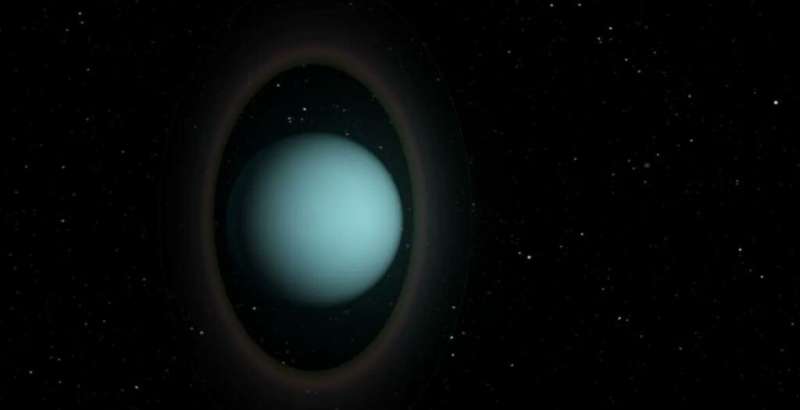The rings of Uranus and Neptune could help map their interiors

Mapping the interior of the ice giants is difficult, to say the least. Not only are they far away and therefore harder to observe, but their constant ice cover makes it extremely hard to detect what lies underneath. So scientists must devise more ingenious ways to see what's inside them. A team from the University of Idaho, Cal Tech, Reed College, and the University of Arizona think they might have come up with a way—to look at the structure of Neptunes' and Uranus' rings.
This isn't the first technique scientists have used, though. Previous efforts have attempted to use the common technique of photometry to detect oscillations on the planet's surface. Those oscillations can then be correlated to the density of particular parts of the planet's interior. While the technique worked well for Jupiter, the photometry data we have of the ice giants so far have proved insufficient to determine the same density profiles.
An alternative is using gravitational oscillations within the planet's surface. In particular, there is a type of oscillation pattern known as a "normal mode." This oscillation pattern happens when all parts of a system begin oscillating with the same sinusoidal frequency. And the gravitational effects of normal mode oscillations in the planet's interior can be felt outside and reflected in the rings themselves.
It also isn't the first time patterns in a planet's rings have been used to calculate its internal density. Saturn has a better-understood ring system than Uranus or Neptune, the two ice giants with known ring systems. Scientists have been performing seismological analyses on the Saturnian ring system for years using data from Voyager and Cassini. The result is a better understanding of some of the normal modes of the planet's interior and, therefore, an estimate of the makeup of the planet's core and the rotation rate of the bulk of its material.
Neptune and Uranus each have a series of different rings, though they are not as well studied as Saturn's. Some of those rings of which are corralled by shepherd moons. But according to the new paper, the same density reflections of resonance waves evident in Saturn's rings are likely present in the ice giant's ring systems as well.
What's more, the inner shepherd moons themselves might be affected by the same resonances. Some of the moons can even create their own resonances, such as one known as a Lindblad resonance. More typically seen on the scale of galaxies, Lindblad resonances are known for driving spiral density waves, which cause the "arms" that can be seen in many spiral galaxies. But at a much smaller scale, the same effect happens on planetary ring systems, including Saturn's, and most likely, Neptune's and Uranus."
The problem with using these resonances reflected in the rings is one that often faces science—there's not enough data. So far, no probe has stayed long enough to map out the details needed to see the full scope of the ring system. The paper's authors and plenty of other researchers suggest that it's time to send a probe to the ice giants to effectively map the ring systems, moons, and myriad other recently discovered objects that are so hard to observe from the Earth. But for now, that mission is still on the drawing board, so we'll have to wait to fully understand the interiors and ring system of these cold, barren worlds. At least when we finally do send a probe out that way, we'll have the mathematical framework to help shed light on these dark places.
More information: Joseph A. A'Hearn, Matthew M. Hedman, Christopher R. Mankovich, Hima Aramona, Mark S. Marley, Ring Seismology of the Ice Giants Uranus and Neptune. arXiv:2206.05385v1 [astro-ph.EP], arxiv.org/abs/2206.05385
Provided by Universe Today





















